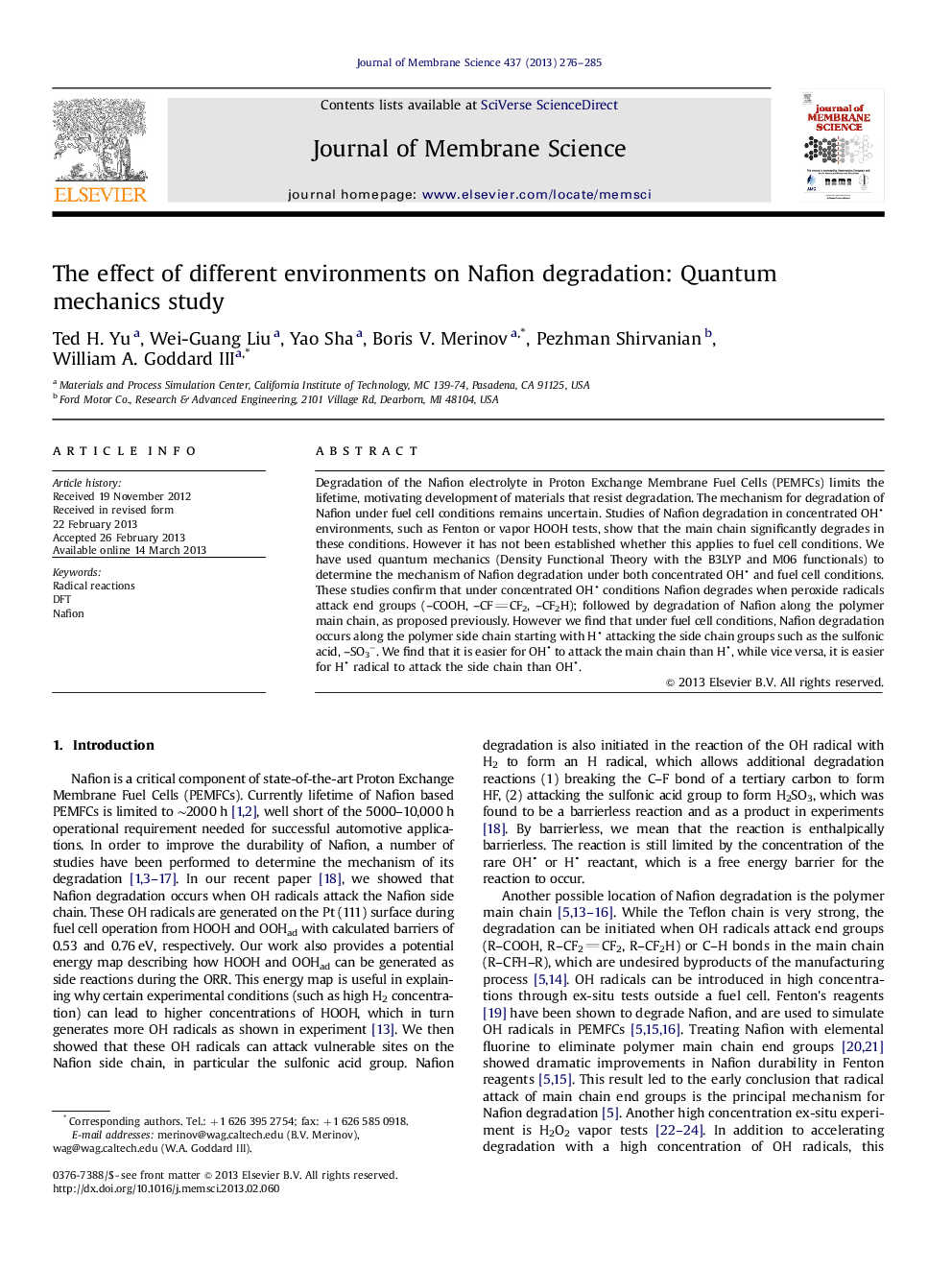| Article ID | Journal | Published Year | Pages | File Type |
|---|---|---|---|---|
| 634319 | Journal of Membrane Science | 2013 | 10 Pages |
•DFT barriers for Nafion main chain and side chain degradation.•Four environments: concentrated OH and Fuel cell with and without gas crossover.•Main chain degradation mechanisms including chain scission.•Side chain degradation favored over main chain in the actual fuel cell.
Degradation of the Nafion electrolyte in Proton Exchange Membrane Fuel Cells (PEMFCs) limits the lifetime, motivating development of materials that resist degradation. The mechanism for degradation of Nafion under fuel cell conditions remains uncertain. Studies of Nafion degradation in concentrated OH environments, such as Fenton or vapor HOOH tests, show that the main chain significantly degrades in these conditions. However it has not been established whether this applies to fuel cell conditions. We have used quantum mechanics (Density Functional Theory with the B3LYP and M06 functionals) to determine the mechanism of Nafion degradation under both concentrated OH and fuel cell conditions. These studies confirm that under concentrated OH conditions Nafion degrades when peroxide radicals attack end groups (–COOH, –CFCF2, –CF2H); followed by degradation of Nafion along the polymer main chain, as proposed previously. However we find that under fuel cell conditions, Nafion degradation occurs along the polymer side chain starting with H attacking the side chain groups such as the sulfonic acid, –SO3−. We find that it is easier for OH to attack the main chain than H, while vice versa, it is easier for H radical to attack the side chain than OH.
Graphical abstractFigure optionsDownload full-size imageDownload high-quality image (170 K)Download as PowerPoint slide
